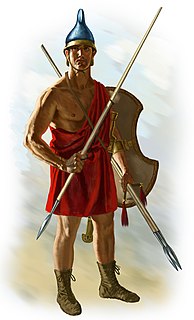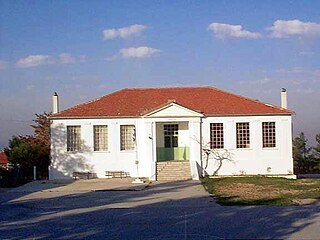History
Housed on the ground floor of a building in Serres town centre, its purpose is to give the local people and visitors to the town an opportunity to learn something about folk culture.
The museum has six sections: musical instruments, jewellery, weapons and uniforms, sacred vessels, traditional dress, and reconstructions of folk life.
The first section has a large number of old string, wind, and percussion instruments. The oldest, two Thracian lyres, date to the seventeenth century. Other noteworthy exhibits are a bellows organ, bagpipes, old gramophones, and a reconstruction of an ancient lyre. The most notable feature of section two is the 200 buckles of all types – priests’ buckles large and small, Sarakatsani buckles, Thracian buckles, and buckles from Orini. There are also collars, earrings, necklaces, watches, bracelets, crowns, and crosses, all dating to the nineteenth and twentieth centuries. The weapons in section three date from the late Neolithic to the present day and include slingstones, stone arrowheads, and metal arrowheads and spearheads. The more modern weapons include muzzle-loaded rifles, flintlocks, nineteenth-century revolvers, sabres from 1821, powder magazines, and percussion caps. There are also military uniforms of various nations, caps, bayonets, medals, and cartridge belts. Of particular interest is a swordstick made by a craftsman from Melnik.
In the ecclesiastical section are suspended 120 handmade silver oil-lamps from churches in Macedonia, numerous censers, a number of Gospels in Greek and in Russian dating to the seventeenth century, silver and gilt chalices, candlesticks, wood-carved and metal crosses, tabernacles, nuptial and baptismal crowns, gold-embroidered vestments (stoles, chasubles), epitaphii. The most important of all the exhibits is a chrismatory of St Demetrios, one of only four in the world. A little further on, recesses contain costumes and bedding used by the Sarakatsani, the Thracians, and the refugees from Asia Minor. Lastly, visitors may admire the traditional women’'s costumes of Florina, Orini in Serres prefecture, Arachova, Metaxades in Thrace, the Darnakochoria, and Nea Zichni, and men’s costumes from Xiropotamos and Thrace.
Costumes and bedding
Ecclesiastical section
Traditional costumes
Traditional instruments
War section

Thrace or Thrake is a geographical and historical region in Southeast Europe, now split among Bulgaria, Greece, and Turkey, which is bounded by the Balkan Mountains to the north, the Aegean Sea to the south, and the Black Sea to the east. It comprises southeastern Bulgaria, northeastern Greece, and the European part of Turkey. The region's boundaries are based on that of the Roman Province of Thrace; the lands inhabited by the ancient Thracians extended in the north to modern-day Northern Bulgaria and Romania and to the west into the region of Macedonia.

The Thracians were an Indo-European speaking people, who inhabited large parts of Eastern and Southeastern Europe in ancient history. Thracians resided mainly in the Balkans, but were also located in Asia Minor and other locations in Eastern Europe.

Sérres is a city in Macedonia, Greece, capital of the Serres regional unit and second largest city in the region of Central Macedonia, after Thessaloniki.

Rhodope is one of the regional units of Greece. It is part of the region of East Macedonia and Thrace. Its name is derived from the Rhodope Mountains, which cover the northern part of its territory. Together with the regional units Evros and Xanthi, it forms the geographical region of Western Thrace. The capital of the prefecture is the city of Komotini. The second largest town is Sapes. Most of the Muslims of Thrace, the only officially recognized minority in Greece, are settled in this area, where they form around half of the population.

A peltast was a type of light infantryman, originating in Thrace and Paeonia, and named after the kind of shield he carried. Thucydides mentions the Thracian peltasts, while Xenophon in the Anabasis distinguishes the Thracian and Greek peltast troops. The peltast often served as a skirmisher in Hellenic and Hellenistic armies. In the Medieval period, the same term was used for a type of Byzantine infantryman.

Fustanella is a traditional pleated skirt-like garment that is also referred to as a kilt worn by men of many nations in the Balkans. In modern times, the fustanella is part of Balkan folk dresses. In Greece, a short version of the fustanella is worn by ceremonial military units such as the Evzones, while in Albania it was worn by the Royal Guard in the interbellum era. Both Greece and Albania claim the fustanella as a national costume. Additionally Aromanians claim the fustanella as their ethnic costume.
Greek traditional music includes a variety of Greek styles played by ethnic Greeks in Greece, Cyprus, Australia, the United States and other parts of Europe. Apart from the common music found generally in Greece, each region of Greece contains a distinct type of folk music that originated from the region due to their history, traditions and cultural influences.

The Sarakatsani are an ethnic Greek population subgroup who were traditionally transhumant shepherds, native to Greece, with a smaller presence in neighbouring Bulgaria, southern Albania, and North Macedonia. Historically centred on the Pindus mountains and other mountain ranges in continental Greece, most Sarakatsani have abandoned the transhumant way of life and have been urbanised.
The Music of Macedonia is the music of the Greek geographic and historic region of Macedonia. It forms part of the broader musical tradition of mainland Greece and of the southern Balkans. Compared to other regions of Greece, the music of Macedonia is characterized by a high degree of diversity, due to the numerous influences it has received over the years from neighboring countries and particularly from refugees arriving in the early 20th century. In general terms, Macedonian music can be thought of as the connecting chain between the Western musical tradition of Epirus and Thessaly and the Eastern musical tradition of Thrace and Constantinople.

The origins of the triangular frame harp are unclear. Triangular objects on the laps of seated figures appear in artwork of Ireland, Scotland, England and Wales, as well as other parts of north-west Europe. This page outlines some of the scholarly controversies and disagreements on this subject.

The Folk Life and Ethnological Museum of Macedonia and Thrace is located in Thessaloniki, Central Macedonia, Greece. It was founded in 1973 by the Macedonian Educational Association and is housed in the building known as Old Government House or Villa Modiano, which was built in 1906 by the architect Eli Modiano, on a 5 hectare plot of land by the sea, for the banker Jacob Modiano. The museum is on four levels, with a semi-basement, two floors, and an attic. Architecturally it is an eclectic structure strongly influenced by Art Nouveau. Particularly impressive is the double loggia with a view of the sea.
Thraco-Macedonian is a conventional name in the study of ancient history to describe the political geography of Macedonia (region) in antiquity. It may refer to:

Museum of Gold and Silver-smithery, Folklore, and History is an ethnographic museum located in the village of Nymfaio, West Macedonia, Greece. The museum was open on 10 September 2000 and inaugurated by Konstantinos Stephanopoulos, president of Greece in that year.

The Costume Museum of Kastoria located in the northern Greek city of Kastoria, opened in 1999 and is run by "Harmony", a music and literary association. It is housed in the residence of the Emmanouil brothers, a two-storey building of the 18th century on the edge of Kastoria lake.

Vavdos is an old mountain village in Chalkidiki, Central Macedonia, Greece. It is 40 km from Thessaloniki and accessed from the Thessaloniki-Polygyros provincial road. In the summer of 1997 the Association of Vavdonians in Thessaloniki and the Folklore and Ethnological Museum of Macedonia and Thrace assembled a folklore collection, which is housed in the junior school, in a room designed for the purpose with its own separate entrance. The exhibits were donated by the villagers.

The Folklore Museum of Giannitsa is opened in October 1977 and housed in a prefabricated structure in center of the town of Giannitsa, Macedonia, Greece. It was established recently by the "Philippos" History and Folklore Association with the aim of promoting local history and tradition.

The Folklore Museum of Goumenissa, also known as Macedonian Folklore Museum or Alevras' Folklore Museum, is located in Goumenissa, a town in the Kilkis regional unit of Central Macedonia, Greece, 85 km from Thessaloniki.

The museum is near the town of Aridaia in Central Macedonia, Greece, more specifically in the recreational area of Loutra Almopias, some 35 km from the Mavrovouni junction on the Thessaloniki-Edessa national highway.

The Michalis Tsartsidis Folklore and History Museum is a museum in Sidirokastro, Central Macedonia, Greece, 85 km from Thessaloniki and 25 km from Serres. The museum was opened in 1979, and was set up as a private initiative in order to showcase the numerous aspects of the personal collection of Michalis Tsartsidis. The collection is divided into two parts, military and folklore.

The Sarakatsani Folklore Museum is a museum dedicated to the history and traditions of the Sarakatsani group native to northern Greek Macedonia. The museum was established in Serres, Central Macedonia, Greece in 1979. The present structure dates to 1997 and was purpose-built to house it.























